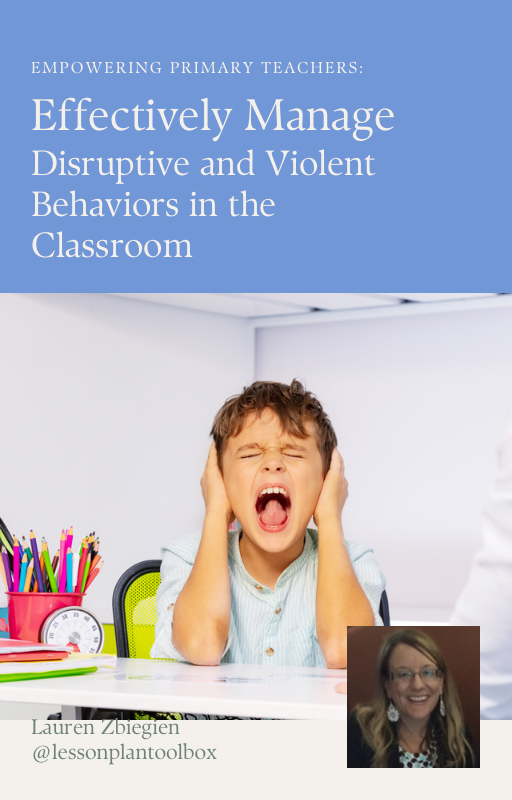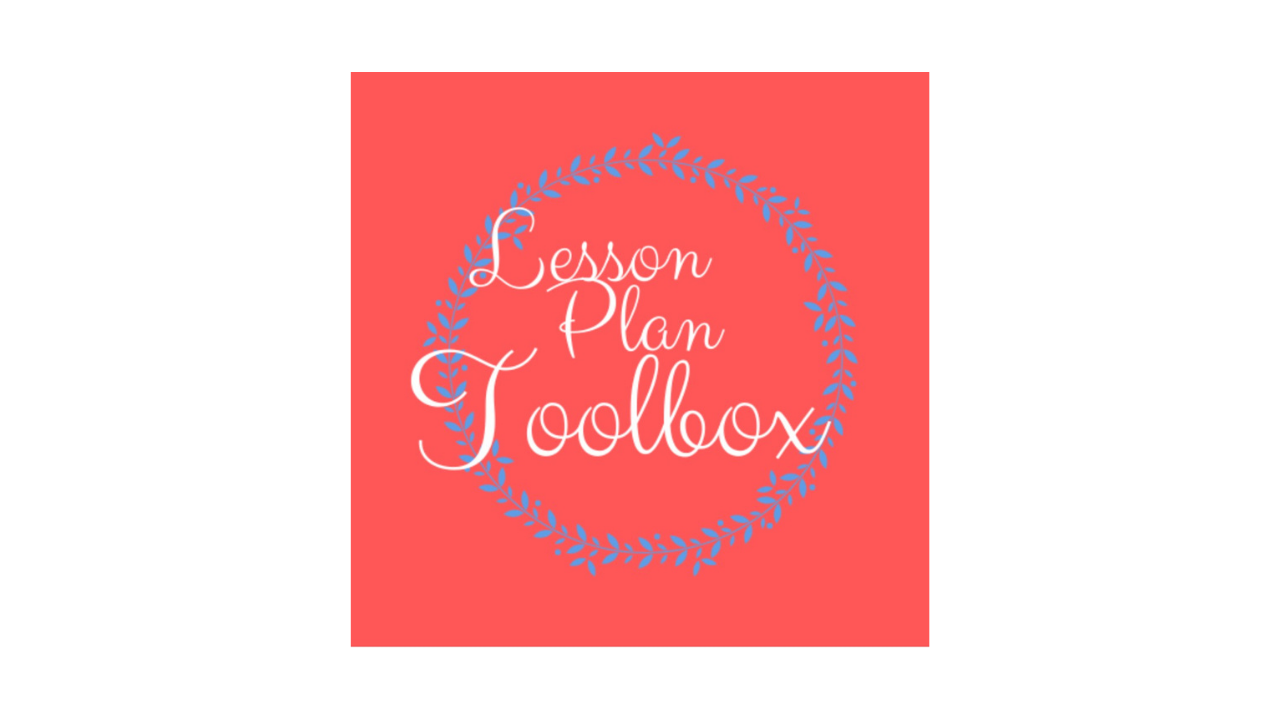
Avoiding Common Classroom Management Mistakes

Click here to watch the YOUTUBE version of this post.
Welcome to our summer series on Classroom Management by Design for Primary Teachers. Each week we will give you a new piece to the classroom management puzzle to have in place when you head back to school this fall. Think of it as a Lego kit just waiting to be built.
Classroom Management by Design for Primary Teachers - Week 11:
Mastering Classroom Management: 8 Common Classroom Management Mistakes to Avoid
As a master teacher with 20 years of experience, I’ve seen the transformative power of effective classroom management. However, I’ve also witnessed many common mistakes that can hinder a teacher’s ability to create a positive and productive learning environment. In this blog post, we’ll explore some of the BIGGEST mistakes primary teachers make when it comes to classroom management and how to AVOID them. By addressing these pitfalls, you can achieve a higher level of classroom management success and foster a thriving classroom community.

Mistake 1: Lack of Clear Expectations
Why It’s a Problem:
One of the biggest mistakes primary teachers make is not setting clear expectations for behavior and academic performance from the outset. Without clear guidelines, students may feel uncertain about what is expected of them, leading to confusion and misbehavior.
How to Avoid It:
- Establish Rules and Procedures Early: At the beginning of the school year, take the time to establish and explain classroom rules and procedures. Make sure they are clear, specific, and age-appropriate.
- Consistent Reinforcement: Consistently reinforce these rules and procedures. Use positive reinforcement to acknowledge when students follow the rules and gentle reminders when they don’t.
- Visual Aids: Use visual aids, such as posters and charts, to remind students of the expectations. Visual reminders help reinforce the rules and make them more accessible to young learners.
Mistake 2: Inconsistent Consequences
Why It’s a Problem:
Inconsistency in enforcing consequences can undermine your authority and confuse students. If students see that rules are not consistently enforced, they may test boundaries and engage in more misbehavior.
How to Avoid It:
- Fair and Consistent Consequences: Ensure that consequences for breaking rules are fair and consistently applied. Avoid playing favorites or letting certain behaviors slide.
- Clearly Communicate Consequences: Clearly communicate the consequences for breaking rules at the start of the year. Make sure students understand what will happen if they don’t follow the rules.
- Follow Through: Always follow through with the established consequences. If students see that you mean what you say, they are more likely to adhere to the rules.
Mistake 3: Lack of Engagement
Why It’s a Problem:
A disengaged classroom can quickly become chaotic. If students are not engaged in their learning, they are more likely to become bored and act out.
How to Avoid It:
- Interactive Lessons: Plan interactive and engaging lessons that capture students’ interest. Use a variety of teaching methods, such as group work, hands-on activities, and technology, to keep students engaged.
- Student Choice: Incorporate student choice in learning activities. Allowing students to have a say in what they learn and how they learn it increases their engagement and motivation.
- Relevant Content: Make learning relevant to students’ lives. Connect lessons to real-world experiences and interests to make the content more meaningful and engaging.
Mistake 4: Overemphasis on Punishment
Why It’s a Problem:
Relying too heavily on punishment can create a negative classroom environment. Students may feel discouraged or resentful, which can lead to more behavior problems.
How to Avoid It:
- Positive Reinforcement: Focus on positive reinforcement to encourage good behavior. Praise students for following the rules and meeting expectations. Use rewards and incentives to motivate positive behavior.
- Restorative Practices: Implement restorative practices to address misbehavior. Instead of just punishing, involve students in resolving conflicts and understanding the impact of their actions.
- Teach Self-Regulation: Teach students self-regulation skills to help them manage their behavior. Use techniques such as mindfulness, deep breathing, and problem-solving strategies.

Mistake 5: Poor Classroom Layout
Why It’s a Problem:
The physical layout of the classroom can significantly impact classroom management. A cluttered or poorly organized classroom can lead to distractions and chaos.
How to Avoid It:
-Organized Space: Keep the classroom organized and clutter-free. Ensure that materials are easily accessible and that there is enough space for movement and activities.
- Flexible Seating: Use flexible seating arrangements to accommodate different learning activities and styles. Allow students to choose their seating to enhance comfort and engagement.
- Designated Areas: Designate specific areas for different activities, such as reading, group work, and independent study. Clearly defined areas help students know where to go and what to do.
Mistake 6: Ignoring Individual Needs
Why It’s a Problem:
Not addressing the individual needs of students can lead to frustration and misbehavior. Every student is unique and may require different approaches to succeed.
How to Avoid It:
- Differentiated Instruction: Use differentiated instruction to meet the diverse needs of your students. Tailor your teaching methods and materials to accommodate different learning styles and abilities.
- Get to Know Your Students: Take the time to get to know your students. Understand their strengths, challenges, and interests. Use this knowledge to create a more inclusive and supportive classroom environment.
- Provide Support: Provide additional support for students who need it. This may include one-on-one instruction, small group work, or accommodations for special needs.
Mistake 7: Lack of Communication with Parents
Why It’s a Problem:
Poor communication with parents can hinder effective classroom management. When parents are not informed or involved, they cannot support their child’s learning and behavior at home.
How to Avoid It:
- Regular Updates: Keep parents informed with regular updates about their child’s progress and behavior. Use newsletters, emails, or a classroom website to share important information.
- Parent Conferences: Schedule regular parent-teacher conferences to discuss students’ progress and address any concerns. Use these meetings to build a partnership with parents and involve them in their child’s education.
- Open Communication Channels: Establish open communication channels with parents. Encourage them to reach out with any questions or concerns and be responsive to their inquiries.
Mistake 8: Neglecting Self-Care
Why It’s a Problem:
Neglecting self-care can lead to teacher burnout, which negatively impacts classroom management. When teachers are stressed and exhausted, they are less effective in managing their classrooms.
How to Avoid It:
- Set Boundaries: Set boundaries to maintain a healthy work-life balance. Take time for yourself and prioritize self-care activities such as exercise, hobbies, and relaxation.
- Seek Support: Seek support from colleagues, mentors, or a professional network. Sharing experiences and strategies with other teachers can provide valuable insights and encouragement.
- Professional Development: Engage in professional development opportunities to enhance your skills and stay motivated. Continuous learning helps you stay current with best practices in classroom management.

Conclusion:
Effective classroom management is essential for creating a positive and productive learning environment. By avoiding these common mistakes, primary teachers can achieve a higher level of classroom management success. Remember to set clear expectations, apply consistent consequences, engage students, focus on positive reinforcement, organize your classroom effectively, address individual needs, communicate with parents, and prioritize self-care. Implementing these strategies will help you foster a thriving classroom community where students are motivated, responsible, and eager to learn.
FREE 5-Day CLASSROOM MANAGEMENT SUCCESS Challenge...Register NOW!
So many teachers have been asking me about effective classroom management strategies.
I’ve seen so many make the mistake of wasting months of their time because they are trying to figure out a solid classroom management plan that works.
And that's just backwards! So if you want to set yourself up for classroom management SUCCESS easily, then register for this challenge TODAY:
Classroom Management Success Challenge - Register!
Each day you will be given 1 small task to set you up for classroom management SUCCESS!
You will have an outline of your vision and values, expectations, classroom roles, and classroom setup.
Giveaway GALORES...with the GRAND PRIZE being a ONE-YEAR Master Classroom Management Membership for ALL of the K-3 teachers in your building!
Register NOW!
DID YOU KNOW…
Did you know I organize a FREE Facebook Group for Mastering Classroom Management? We are gearing up for our summer sessions, so if you’re looking for a simple way to improve your classroom management join the already 200+ teachers that have signed up: Mastering Classroom Management Facebook Group
Your ebook GIFT: Empowering Primary Teachers: Effectively Manage Disruptive and Violent Behaviors in the Classroom

FINALLY…
If you enjoyed the tips in this post, you might also enjoy this series of videos Classroom Management by Design for Primary Teachers:
Don’t forget to follow us over on Instagram!
Teach~Relax~Repeat
Lauren

